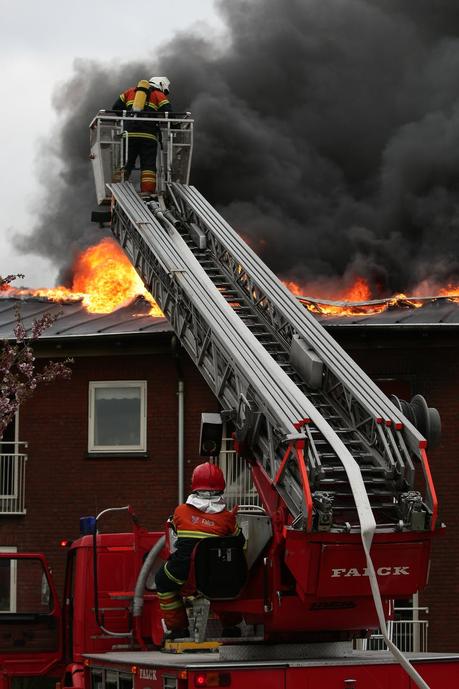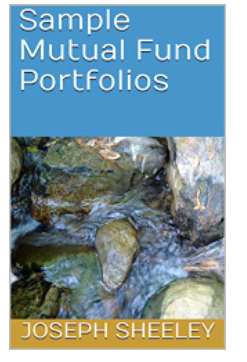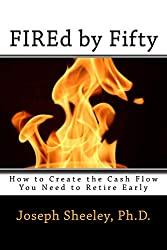
Photo by Michael Noel on Pexels.com
" data-orig-size="867,1300" data-image-title="firefighters on a fire truck" data-orig-file="https://smallivy.files.wordpress.com/2022/07/pexels-photo-4741692.jpeg" data-image-description="" data-image-meta="{"aperture":"0","credit":"","camera":"","caption":"","created_timestamp":"0","copyright":"","focal_length":"0","iso":"0","shutter_speed":"0","title":"","orientation":"0"}" data-medium-file="https://smallivy.files.wordpress.com/2022/07/pexels-photo-4741692.jpeg?w=200" data-permalink="https://smallivy.com/2022/07/09/adult-your-finances-emergency-funds/pexels-photo-4741692/" alt="" class="wp-image-21984" data-large-file="https://smallivy.files.wordpress.com/2022/07/pexels-photo-4741692.jpeg?w=683" />Photo by Michael Noel on Pexels.comThis is the second post in this series on Adulting your Finances where we cover the basics you need to know when you step out the door of Mom and Dad’s home and start living on your own (or, maybe just start living independently and paying your way while staying at the home your grew up in). Last time we covered the basic budget, where we also mentioned emergency funds. (To start from the beginning, go here..) Today we’ll go into emergency funds in detail: What they are. Why you need one. And where to put the money while you wait for an emergency.
Hey – if you like The Small Investor, help keep it going. Buy a copy of the SmallIvy Book of Investing: Book1: Investing to Grow Wealthy or just click on one of the product links below, then browse and buy something you need from Amazon’s huge collection. The Small Investor will make a small commission each time you buy a product through one of our links.

What is an emergency fund?
The first time I heard of emergency funds was listening to get-out-of-debt guru Dave Ramsey. As he would say, an emergency fund is the way to keep Murphy away (as in “Murphy’s law”). An emergency fund is money you set aside to pay for “emergencies” that come up. These are things like a broke-down car, a hole in the roof, or a trip to the emergency room. They are not things like a trip to the beach because all of your friends are going or a new roof for the house because it is time. Both of those are things you should be saving up and investing for before they come due.
A big reason to have an emergency fund is to have enough money to get you through should you lose your job until you get the next one. This keeps you from missing payments and dinging your credit when you are between jobs, plus possibly facing a foreclosure or an eviction. It also gives you the ability to be a little choosy about the job you pick. If you’re desperate to find work, you might need to take the next thing that you find, which might leave you too busy to search for a better job, plus you might have no negotiating power when it comes to a salary. Being able to walk away is a key to negotiating. An emergency fund gives you some leverage.
Dave Ramsey recommends that you start with a “baby emergency” fund, which was $1000 back in the early 2000’s. Given inflation, something on the order of $2000 might be appropriate today. That gives you enough money to cover a car repair or two or an ER visit. A full emergency fund is 3 to 6 months’ worth of expenses. To figure out how much this is, take your monthly budget, remove the stuff you really don’t need, then multiply the by three and six. For example, if you need at least $2000 to cover rent, food, utilities, gasoline, and your car payment, your emergency fund should be between $6000 and $12,000.
If you invest in a non-retirement account (such that you can take out money if you need it without paying a penalty), you can move to the lower end of this range since you can probably take some money out of investments if you really need it. For example, if you have $100,000 in investments, you might just keep $6000 in your emergency fund since even in a bad bear market that takes your portfolio down 40%, you’ll have on the order of $60,000 in stock from which you could sell a few thousand dollars worth if you really needed to. Otherwise, you should tend towards the higher end of the range since the more money you have available, the more flexibility you have. Even if you have investments, however, you should have some money in cash since you don’t want to sell your stocks at a loss because you have an emergency when the markets are down. You also don’t want to wait for the sale to settle to pay the bill some of the time.

Dave Ramsey says that you should not touch the money in your emergency fund unless it is a true emergency and that you should be religious about putting it back if you need to tap into it. Remember that this is your Murphy repellent and Murphy is likely to show up just at the worst possible time – right when you spent your emergency fund down to nothing. This is good advice and you won’t go wrong by following it.
I have found, however, that if you also have a big stock portfolio to back up your emergency fund, it can be useful to use a portion of your emergency fund from time to time to “float” an expense. For example, when our home insurance bill for the year comes due, we commonly dip into the emergency fund to cover the expense and then build it back up over the next few months. I feel safe doing this only because I have the stock portfolio to back me up, so all I’m doing is using the cash in the emergency fund to pay the bill instead of selling stock and then investing again, possibly creating capital gains and investment expenses. If I didn’t have the investment account, I’d be saving up cash to pay the insurance bill ahead of time so that I wouldn’t need to dip into the emergency fund.


Want all the details on using Investing to grow financially Independent? Try The SmallIvy Book of Investing.
Because I have the portfolio, however, I can leave the money invested and get the extra return. If I can get a 10% annualized return in stocks over my working lifetime, by having that $3000 invested, I will receive about $320,000 in investment returns. That makes up for the few times I may need to sell $3000 worth of stock at a loss of even $1500. All that is important is that the investment account is big enough to suffer a 40-60% loss and still be large enough to cover a job loss for long enough to find a new job.
Where to keep an emergency fund
Typically an emergency fund would be kept in a savings account or a money market fund. You should be able to access this money easily should the need arise and you don’t want to take the risk of losing any of it, so even though you’ll be losing money to inflation in these accounts, it is the best place for it. Just think of it like paying insurance payments for the piece of mind of knowing you’ll have the money you need when you need it. Assuming you keep $10,000 in your emergency fund and you lose 2% to inflation each year, this will cost you about $2500 in spending power in 18 years or about $140 per year. That’s pretty cheap insurance compared to needing to put something on a credit card at 18% per year because you don’t have the cash needed.
Because you should not need to touch the money except in an emergency, you can try to increase the interest rate you get a bit by investing the money in a CD. If you need to cash out the CD early because you need the cash, you’ll lose some interest, but not any of the principle. For example, some CDs charge you one to three months’ interest if you take the money out early. For example, if you can get a 1-year CD paying 0.5%, you’ll still be losing money to inflation (averaging 3%) but at least you’ll be doing better than the 0.01% you might get in a savings account. Because you’ll likely need to touch some of the money sometimes, you might just want to lock a portion of the money away in a CD. For example, you might keep $3000 available in a savings account – enough to pay for most emergencies – and then lock the other $6000 away in a CD. If you do this, you might also want to look at a longer term CD like a 3-year or 5-year CD since you can get higher interest rates that way. If interest rates are going up like they are now, however, you might be better to stick with shorter terms and wait so that you can roll over into a higher rate in a year or two instead of being locked in for five years.
To share a personal experience, because we were using some of our emergency fund to float big expenses, a few years ago I decided to leave the majority of our emergency fund in a savings account but then put the remaining $3000 into a 6-month CD to try to get higher interest rates. I did this for a few years, but even in the CD rates were only about 0.10%, so the few dollars extra I was making wasn’t really worth the hassle. Now that rates are rising, however, I will probably start putting a portion into CDs again, this time with a longer term so that I can lock in the higher rates should they go back down again. I have not done this yet, but will be looking to do so over the next few years when the time seems right.
FIRE = Financially Independent, Retired Early. Want to learn how to get FIREd and become financially independent, please consider picking up a copy of my new book, FIREd by Fifty: How to Create the Cash Flow You Need to Retire Early This is the instruction manual on how to become financially independent.

Can you invest your emergency fund?
As stated previously, the larger your non-retirement investment account, the smaller you cash emergency fund should be. It would always be good to have at least three months’ worth of expenses in cash since you are more likely to lose your job when the economy is bad and your stocks are also down, but beyond that you can probably invest to increase your returns and stop losing money to inflation. If you have a lot more than that in investments, an emergency fund becomes almost unnecessary since you can sell investments as needed to pay expenses, but having cash allows you to pay for things without needing to sell stocks at possibly bad times. You might cut down the cash portion to just what you’ll need for things like car repairs and other big, random expenses and invest the rest, expecting to fall back on your investments to get you through a job loss.
Using non-liquid assets like rental real estate and fine art as an emergency fund is not wise. You really need to have the liquidity available to raise cash quickly should something come up. You don’t want to lose a job because of a recession and then find you can’t sell the rental property you have to raise cash because no one is buying. With stocks, while they no doubt will go down in value, you should be able to sell as needed to raise cash. You can also sell slowly as you need the money so that you won’t necessarily sell everything at the bottom. Because stocks tend to go down before recessions start, it is likely that your stock portfolio will be recovering even if you’re still waiting for the economy to recover so you can find the next job.
We haven’t mentioned investing your emergency funds in bonds in this discussion. Bonds are certainly a viable alternative to investing in stocks since they are fairly liquid and trade on an exchange. A portfolio of bonds (or a diversified bond fund) is also not likely to go down as far as a portfolio of stocks. Normally the best thing would be to balance the portion of your emergency fund invested in stocks and bonds since one may zig when the other one zags, so the average of the two will be less extreme than either alone. One also doesn’t know over short periods of time whether bonds or stocks will perform better, so while stocks will outperform bonds over 30 years, bonds may best stocks over a five year period. Because interest rates have been so low, however, and bonds decline when interest rates rise, it seems like bonds are more risky than they traditionally are. It might be better, therefore, the wait for interest rates to return to a more normal range before investing substantially in bonds.
Have a burning investing question you’d like answered? Please send to [email protected] or leave in a comment.
Follow on Twitter to get news about new articles. @SmallIvy_SI
Disclaimer: This blog is not meant to give financial planning or tax advice. It gives general information on investment strategy, picking stocks, and generally managing money to build wealth. It is not a solicitation to buy or sell stocks or any security. Financial planning advice should be sought from a certified financial planner, which the author is not. Tax advice should be sought from a CPA. All investments involve risk and the reader as urged to consider risks carefully and seek the advice of experts if needed before investing.
